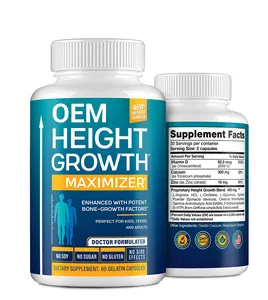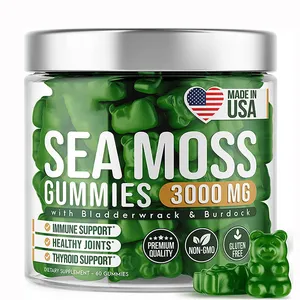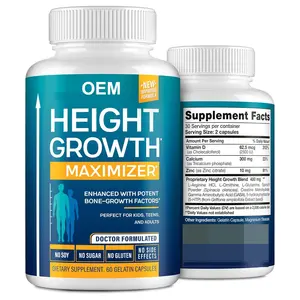ได้รับความนิยมในอุตสาหกรรมของคุณ






เครื่องมือเหล็กคาร์บอน JIS G4401 SK105ราคาต่อกิโลกรัม
฿29,627.88 - ฿36,294.15
การสั่งซื้อขั้นต่ำ: 1 ตัน







6 มม.8 มม.10 มม.12 มม.16 มม.20 มม.เหล็กเส้นรีดร้อน hrb400 hrb500 b500b เหล็กเส้น
฿18,517.42 - ฿20,924.69
การสั่งซื้อขั้นต่ำ: 1 ตัน







B500A/B500B/B500C กาวคอนกรีต Bs 4449 มาตรฐาน 32 มม.Durchmesser Fe En Acier 500 Gb/T 5223-2002 3 มม.เหล็กราคาเหล็กเส้น
฿14,073.24 - ฿16,295.33
การสั่งซื้อขั้นต่ำ: 5 ตัน







โรงงานขายส่งขายแผ่นเหล็กคาร์บอน A36,SM400A,St37-2,SA283Gr สําหรับอุตสาหกรรมก่อสร้าง
฿16,665.68 - ฿20,369.17
การสั่งซื้อขั้นต่ำ: 5 ตัน







บัตร RFID สแตนเลสยอดนิยมระบบล็อคโรงแรมอัจฉริยะ
พร้อมส่ง
฿768.11 - ฿799.96
การสั่งซื้อขั้นต่ำ: 1 ชิ้น
การจัดส่งต่อชิ้น: ฿921.06







หมวดหมู่ยอดนิยม
เกี่ยวกับ เหล็กแอสซาส
เหล็กแอสซาส ไม่ใช่เรื่องใหม่สำหรับคนทั่วไปในปัจจุบันและไม่ถือว่าเป็นสิ่งต้องห้ามอีกต่อไป หากคุณกำลังมองหาความสุขสุดท้ายนี้คุณต้องตรวจสอบความยิ่งใหญ่ คอลเลกชัน เหล็กแอสซาส ที่ Alibaba.com เหล่านี้ยั่วยวนและโค้ง เหล็กแอสซาส คุ้มค่ากับเงินทุกบาทและมั่นใจว่าจะทำให้ค่ำคืนนี้พิเศษสำหรับคุณ ตุ๊กตาเหล่านี้มีลักษณะเหมือนจริงตั้งแต่ขนไปจนถึงปลายเท้าในทุกแง่มุม
ไม่ว่าคุณจะเป็นคนขี้เหงาที่กำลังมองหาคู่ชีวิตที่เหมือนมีชีวิตหรือคู่รักที่ต้องการเติมชีวิตชีวาให้กับชีวิตคุณสามารถใช้สิ่งเหล่านี้ได้ . เหล็กแอสซาส สำหรับจุดไฟนั้น ที่งดงามเหล่านี้ เหล็กแอสซาส สามารถปรับแต่งได้ตามความคาดหวังของคุณ น่าทึ่งเหล่านี้ เหล็กแอสซาส มีให้เลือกทั้งชายและหญิงและทำจากซิลิโคนเกรดยาเพื่อความปลอดภัยในการใช้งาน รับตอนนี้และเพลิดเพลินไปกับค่ำคืนแห่งความหลงใหลและไฟ
Alibaba.com ขอเสนอสิ่งที่น่าทึ่งเหล่านี้ เหล็กแอสซาส ในทุกรูปร่างขนาดและชาติพันธุ์ ไม่ว่าความต้องการของคุณสำหรับไฟล์. เหล็กแอสซาส คุณสามารถหาได้ทั้งหมดบนไซต์ เหล่านี้ เหล็กแอสซาส ได้รับการขึ้นรูปโดยช่างฝีมือที่ดีที่สุดและทุกรายละเอียดที่ซับซ้อนจะได้รับการตรวจสอบอย่างละเอียด ตุ๊กตาเหล่านี้มีดวงตาผมเล็บและส่วนอื่น ๆ ของร่างกายคล้ายกับคนในชีวิตจริง
Alibaba.com ให้บริการที่หลากหลาย เหล็กแอสซาส ที่สามารถช่วยคุณซื้อผลิตภัณฑ์ที่เหมาะสมกับงบประมาณของคุณและข้อกำหนดอื่น ๆ ผลิตภัณฑ์เหล่านี้ปลอดภัยต่อการใช้งานได้รับการรับรองและเป็นมิตรกับสิ่งแวดล้อม มีคำสั่งซื้อ OEM สำหรับผลิตภัณฑ์เหล่านี้
ไม่ว่าคุณจะเป็นคนขี้เหงาที่กำลังมองหาคู่ชีวิตที่เหมือนมีชีวิตหรือคู่รักที่ต้องการเติมชีวิตชีวาให้กับชีวิตคุณสามารถใช้สิ่งเหล่านี้ได้ . เหล็กแอสซาส สำหรับจุดไฟนั้น ที่งดงามเหล่านี้ เหล็กแอสซาส สามารถปรับแต่งได้ตามความคาดหวังของคุณ น่าทึ่งเหล่านี้ เหล็กแอสซาส มีให้เลือกทั้งชายและหญิงและทำจากซิลิโคนเกรดยาเพื่อความปลอดภัยในการใช้งาน รับตอนนี้และเพลิดเพลินไปกับค่ำคืนแห่งความหลงใหลและไฟ
Alibaba.com ขอเสนอสิ่งที่น่าทึ่งเหล่านี้ เหล็กแอสซาส ในทุกรูปร่างขนาดและชาติพันธุ์ ไม่ว่าความต้องการของคุณสำหรับไฟล์. เหล็กแอสซาส คุณสามารถหาได้ทั้งหมดบนไซต์ เหล่านี้ เหล็กแอสซาส ได้รับการขึ้นรูปโดยช่างฝีมือที่ดีที่สุดและทุกรายละเอียดที่ซับซ้อนจะได้รับการตรวจสอบอย่างละเอียด ตุ๊กตาเหล่านี้มีดวงตาผมเล็บและส่วนอื่น ๆ ของร่างกายคล้ายกับคนในชีวิตจริง
Alibaba.com ให้บริการที่หลากหลาย เหล็กแอสซาส ที่สามารถช่วยคุณซื้อผลิตภัณฑ์ที่เหมาะสมกับงบประมาณของคุณและข้อกำหนดอื่น ๆ ผลิตภัณฑ์เหล่านี้ปลอดภัยต่อการใช้งานได้รับการรับรองและเป็นมิตรกับสิ่งแวดล้อม มีคำสั่งซื้อ OEM สำหรับผลิตภัณฑ์เหล่านี้



























